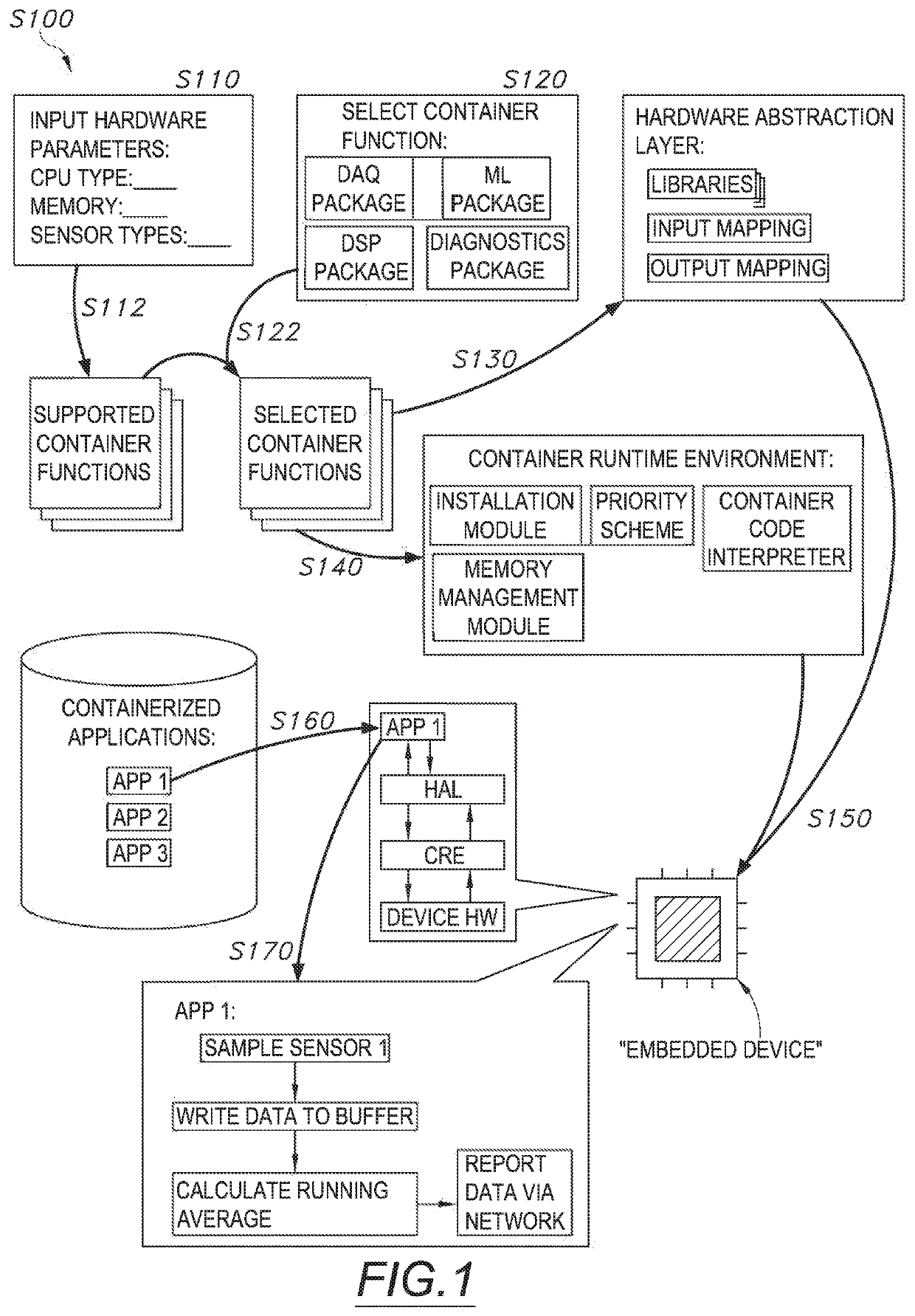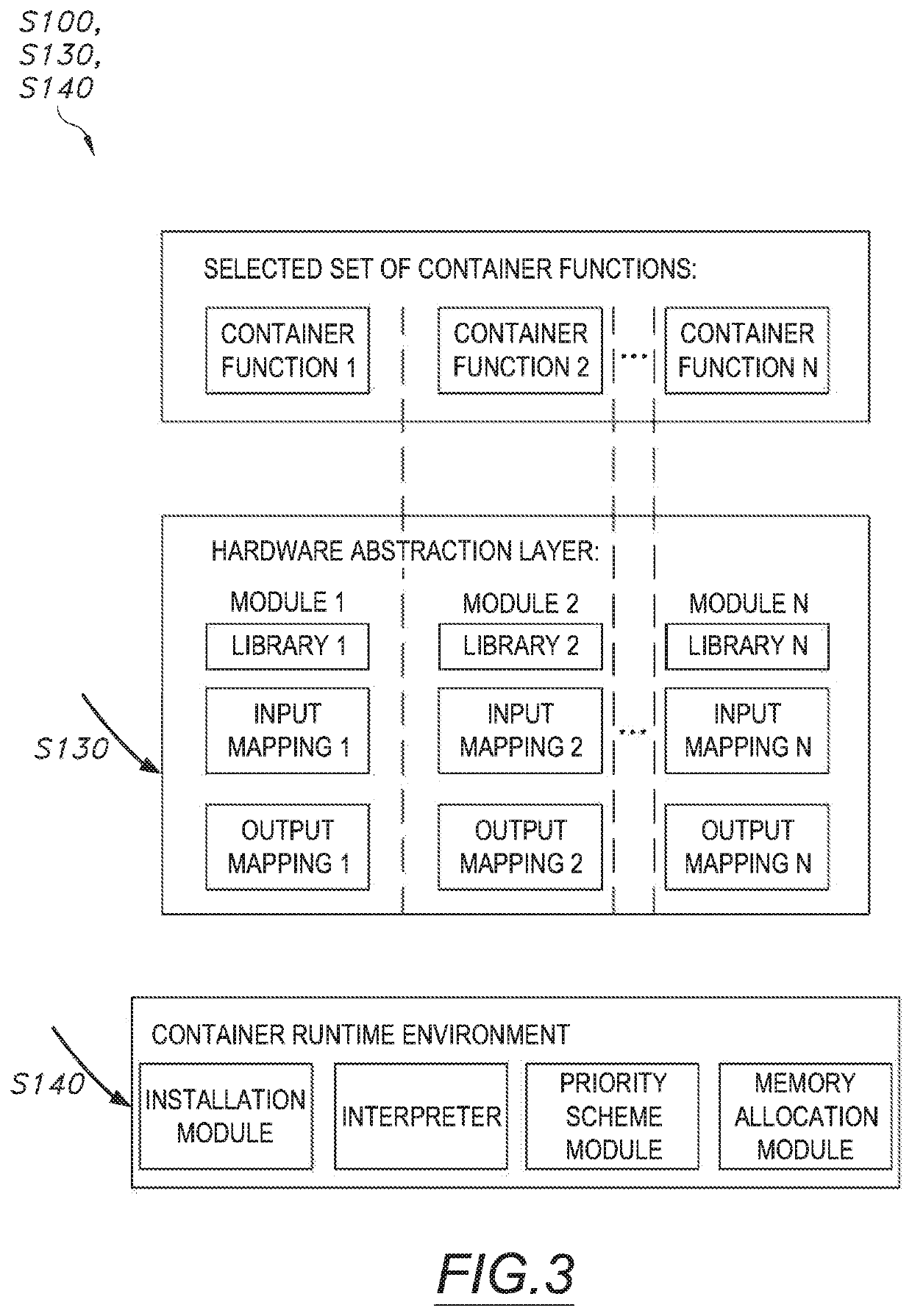Method for deploying containerized security technologies on embedded devices
a security technology and embedded device technology, applied in digital data authentication, instruments, computing, etc., can solve the problems of the computer system not being able to install the first containerized application on the second embedded device executing the second cre, and achieve the effect of increasing the flexibility of embedded device deployment, increasing security and ease, and insufficient computational and/or memory
- Summary
- Abstract
- Description
- Claims
- Application Information
AI Technical Summary
Benefits of technology
Problems solved by technology
Method used
Image
Examples
Embodiment Construction
[0009]The following description of embodiments of the invention is not intended to limit the invention to these embodiments but rather to enable a person skilled in the art to make and use this invention. Variations, configurations, implementations, example implementations, and examples described herein are optional and are not exclusive to the variations, configurations, implementations, example implementations, and examples they describe. The invention described herein can include any and all permutations of these variations, configurations, implementations, example implementations, and examples.
1. METHOD
[0010]As shown in FIG. 1, a method S100 for deploying containerized applications to an embedded device includes: accessing a set of hardware parameters characterizing an embedded device in Block S110; identifying a set of supported container functions based on the set of hardware parameters in Block S112; accessing a selection of container functions in Block S120; identifying a se...
PUM
 Login to View More
Login to View More Abstract
Description
Claims
Application Information
 Login to View More
Login to View More - R&D
- Intellectual Property
- Life Sciences
- Materials
- Tech Scout
- Unparalleled Data Quality
- Higher Quality Content
- 60% Fewer Hallucinations
Browse by: Latest US Patents, China's latest patents, Technical Efficacy Thesaurus, Application Domain, Technology Topic, Popular Technical Reports.
© 2025 PatSnap. All rights reserved.Legal|Privacy policy|Modern Slavery Act Transparency Statement|Sitemap|About US| Contact US: help@patsnap.com



